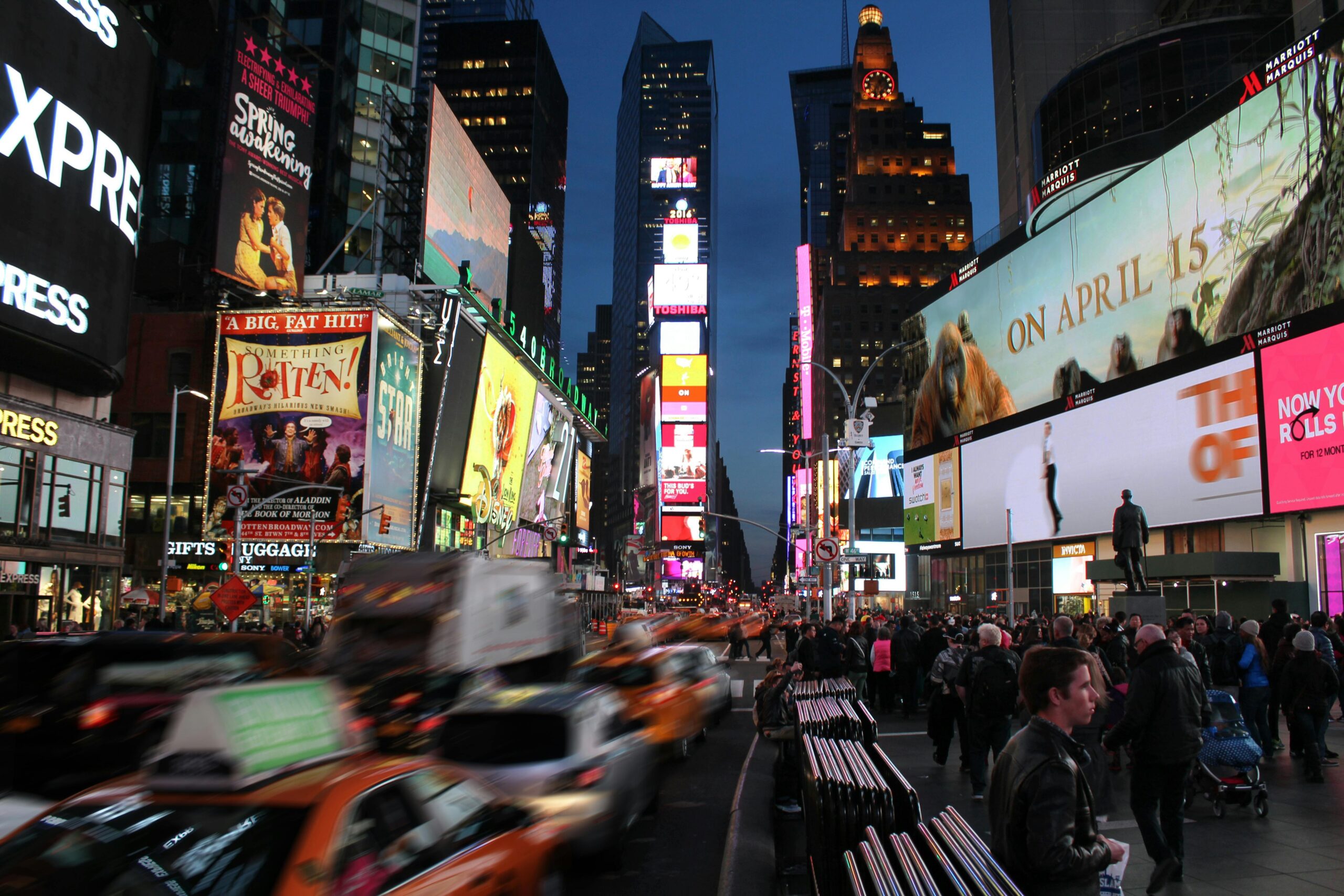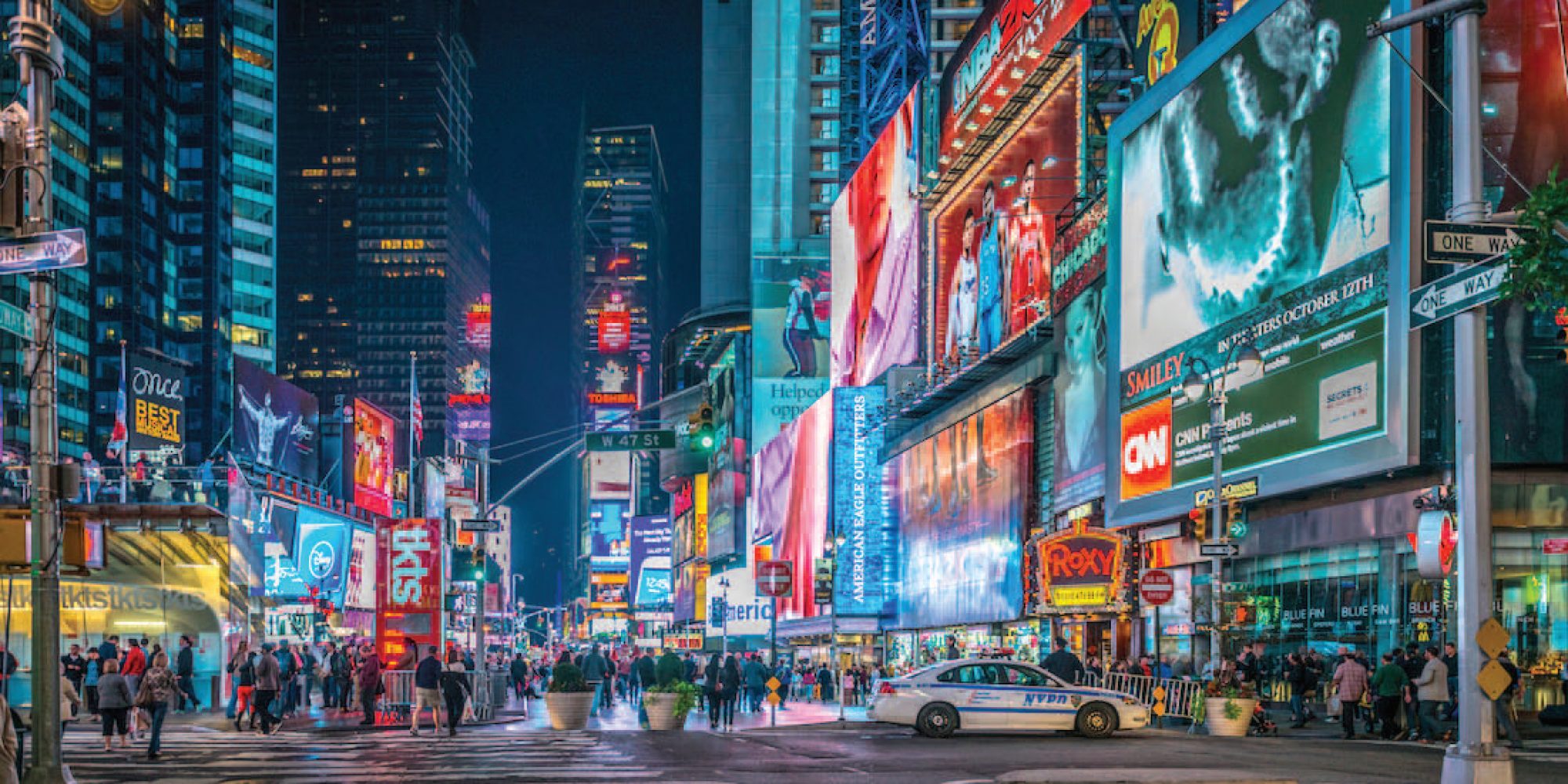
Two Advertising Powerhouses: UK and USA in Focus
Advertising has long been one of the strongest cultural and economic exports from both the UK and the USA. From the creative hub of Madison Avenue in New York to the iconic advertising corridors of London’s Soho, these two markets have shaped global storytelling in unique yet surprisingly parallel ways. Outdoor advertising has been central to this, with the neon glow of Times Square echoing the spectacle of Piccadilly Circus. But as much as there are shared approaches, the nuances in regulation, creativity and consumer response reveal how each country has carved its own style.
Shared Tactics Across the Atlantic
Despite differences in culture and scale, UK and USA advertisers often deploy similar strategies. Both markets are heavily invested in OOH outdoor advertising, using transport networks and major city centres to dominate attention. New York’s subway advertising bears striking similarities to London Underground campaigns, where escalator panels, tunnel walls and digital billboards transform commuting into a stage for brand messaging.
Television also remains a shared powerhouse. In the UK, Christmas adverts have become a cultural event, with John Lewis and Marks & Spencer setting the tone each festive season. The USA mirrors this tradition through Super Bowl commercials, where storytelling, humour and cinematic production values push boundaries in front of millions of viewers. These shared traditions prove that spectacle and seasonal anchoring are universally effective tools in advertising.
Differences in Tone, Regulation and Audience
The contrasts, however, are where the story becomes more interesting. American advertising is often bolder, more direct and more overtly sales driven. UK campaigns, in contrast, lean towards subtlety, wit and emotional storytelling. Compare Coca-Cola’s expansive Super Bowl campaigns in the USA with Cadbury’s quieter but deeply emotional “Gorilla” spot in the UK.
Regulation also plays a role. The UK’s ASA (Advertising Standards Authority) enforces strict guidelines on truthfulness, environmental claims and children’s advertising. The USA, while regulated by the FTC, often allows greater freedom in comparative and promotional messaging. This is why price-led and comparative advertising is more common across the Atlantic, while UK brands prefer indirect persuasion through creative storytelling.
Even in outdoor advertising, the difference is visible. The USA still boasts large static billboards across highways and suburban sprawl, whereas the UK has shifted more rapidly toward digital OOH formats in urban centres, especially in London, Birmingham and Manchester. The compact geography of the UK has forced advertisers to be sharper with message placement, while the USA’s vast landscapes accommodate scale and repetition.
What This Means for Advertisers and Brands
For advertisers working across both territories, understanding these nuances is critical. A bus advertising campaign in the UK, for example, may rely on minimal text and clever creative that commuters can digest in a second, while an American transport advertisement in cities like Chicago or Los Angeles may lean towards bold calls-to-action and big brand statements. Similarly, digital OOH in London’s Westfield centres requires nuanced targeting and programmatic buying, while the USA’s Times Square remains an unapologetic showcase for spectacle.
Brands entering both markets need to adapt without losing their core identity. A UK supermarket chain advertising in the USA would need to lean into value-driven messaging, while an American sports brand entering the UK may need to dial up storytelling and local cultural resonance to have an effect. The same applies in digital spaces, where US campaigns often focus on data-driven targeting, while UK campaigns still prioritise tone and creative differentiation. Insights into this shift can be seen in Media Agency Group’s article on the rise of dynamic digital OOH.
A Tale of Two Markets Moving Forward
The future of advertising in both the UK and USA will be defined by technology, sustainability and consumer expectation. Yet the cultural DNA of each market will keep shaping how tactics evolve. The USA will likely continue embracing bold spectacle, while the UK sharpens its reputation for understated brilliance. Out of home advertising will remain a uniting force. For advertisers and brands, the opportunity lies not in choosing between these markets but in learning how to borrow the best traits of each. The USA offers scale and daring ambition, while the UK offers craft and emotional resonance. Together, they paint the picture of a global advertising industry that thrives on both similarities and differences.


